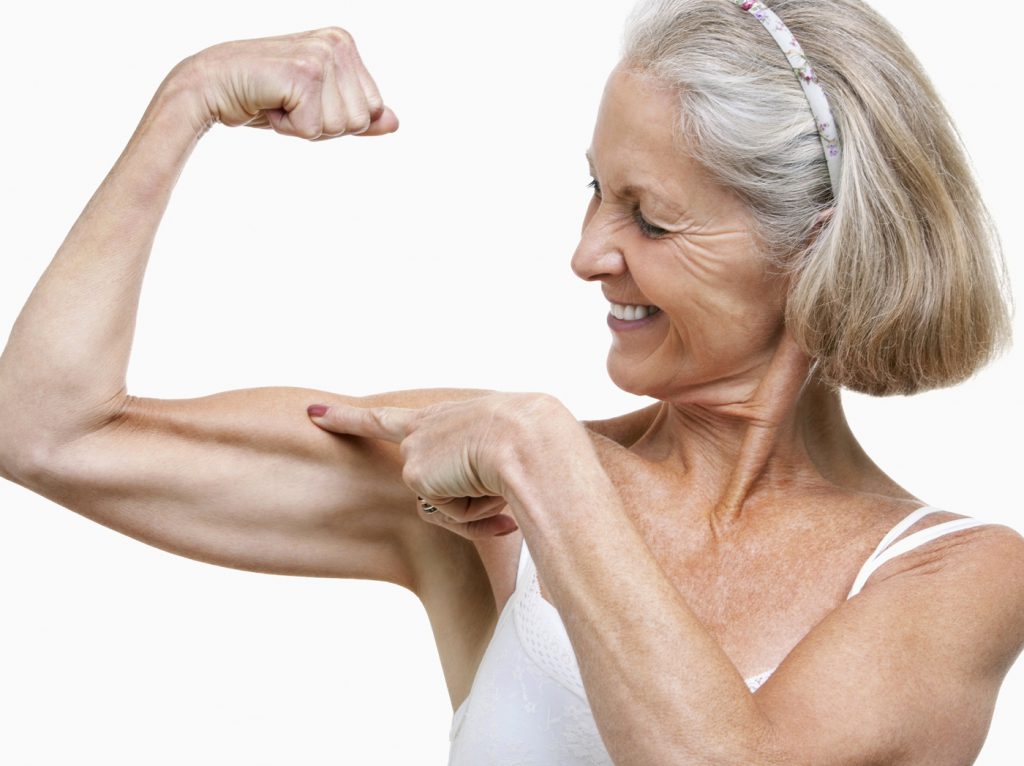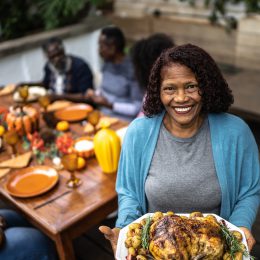6 Fitness Mistakes You Don’t Realize You’re Making
It’s never too late to transform your body and your health—assuming you’re not being derailed by these common missteps.

It’s frustrating to work out consistently and not get the results you want. Even the most experienced gym-goers make mistakes on the quest for a fit, healthy body.
To help you get on the right track, we talked to fitness experts across the country to uncover the most common slipups among older adults—and ways to fix them.
Mistake #1: You Think, “I’m Too Old for That”
Age is just a number. It’s a cliché because it’s true, says Gavyn Berntsen, a personal trainer with the Trainerize app who specializes in working with older adults. With the right training, he says, older adults are capable of running in races, lifting heavier weights, and trying new activities. But by thinking, “I’m too old for that,” you risk stunting your own progress, limiting yourself to workouts that aren’t challenging enough to trigger your body to adapt and improve in any significant way.
The fix: If you haven’t been physically active in a while or have any symptoms that have stopped you from exercising, such as pain or balance issues, talk to your doctor as a first step.
Got any instructions from your doctor? Good. Now, write down one performance-based goal that gets you fired up. It could be anything from finishing a 5K to performing your first full pushup. Then, start where you’re comfortable and progressively challenge yourself to reach that goal. It may help to set smaller, incremental goals in between.
A good rule of thumb: Aim to increase the amount of time you spend working out or how hard you exercise by 5 to 10 percent from week to week. So if you currently go for 20-minute walks, add one to two minutes next week. Slow and steady progress is best.
Need some inspiration? George MacDonald didn’t commit to fitness until his 60s. Rosemary Nichols signed up for the gym at 71. Nan Smith joined SilverSneakers at 89—and celebrated her 103rd birthday with exercise.
Mistake #2: You Only Drink When You’re Thirsty
Our body’s thirst mechanism weakens as we age, meaning it’s easier to be dehydrated and not know it, says Joy Dubost, Ph.D., R.D., a sports dietitian and food scientist. Research shows losing as little as 2 percent of your weight in fluids (if you weigh 150 pounds, that’s 3 pounds) can have a significant impact on both your mind and body. Risks of dehydration include sluggish workouts and poor muscle recovery to more serious issues, such as fainting and heat stroke.
The fix: To stay hydrated, Dubost recommends that women consume at least nine—and men at least 12—cups of liquids per day. Alcohol doesn’t count, but water, tea, and soup do. Choose options with low or no added sugar or sodium as much as possible.
As far as water, the exact amount you need depends on the foods you’re eating, how much you exercise, and any medication instructions from your doctor. Don’t wait to sip until you’re thirsty—that’s a sign you’re already slightly dehydrated. Other warnings: headache, fatigue, yellow urine, and these five lesser-known signs that you’re low on H20.
Mistake #3: You Skimp on Protein
Many older adults struggle to meet the daily recommended dose of protein: 0.8 grams per kilogram of weight (for a 180-pound person, that equals roughly 65 grams of protein per day). However, mounting research shows that older adults actually need even more protein to keep their muscles strong and healthy. That’s not only because muscle mass and strength naturally declines with age, but the body’s ability to effectively absorb and use protein also decreases.
The fix: Research published in the American Journal of Physiology—Endocrinology and Metabolism shows that getting roughly double the standard protein recommendation, or 1.5 grams per kilogram of weight, significantly improves muscle health and strength in adults ages 50 and older. Focus on getting at least 20 grams of protein at every meal from lean sources like legumes (beans, lentils, and chickpeas), as well as dairy, eggs, fish, nuts, and lean meats, Dubost says.
Get started by adding some of these seven protein-packed vegetables or these five no-cook protein foods to your grocery list.
Mistake #4: You Ditched Dairy Years Ago
Unfortunately, many older adults experience stomach discomfort if they consume too much dairy. But avoiding it entirely often results in calcium and vitamin D deficiencies—both important nutrients for maintaining bone health and keeping your muscles strong. Dairy is also rich in vitamin B12, which can help prevent a type of anemia that becomes increasingly common with age and can sabotage even the best workouts by depriving your body’s tissues of the oxygen they need to perform their best, Dubost says.
The fix: Aim to drink three cups of milk every day, Dubost says. “If you can’t tolerate milk, try small amounts of yogurt, buttermilk, or hard cheeses, which are lower in lactose.” Lactose-free milks such as Lactaid or Fairlife ultra-filtered milk are another great option. The latter contains 30 percent more calcium (and 60 percent more protein) than traditional milk.
Other great foods to consider:
Subscribe to our newsletter
It's quick and easy. You could be one of the 13 million people who are eligible.
Already a member? Click to discover our 15,000+ participating locations.
Follow Us
- Collard greens, broccoli rabe, and kale are high in calcium.
- Salmon, tuna, and fortified cereals are good sources of vitamins D and B12.
Not sure if you’re getting enough of these nutrients? Talk to your doctor about your diet.
Mistake #5: You’re “Too Busy” to Exercise
“If you genuinely believe you have no time, then you will never have time for fitness, and your health will always be on the back burner,” Berntsen says. You might just need a fresh perspective.
The fix: Think of each workout as an important appointment, like a dentist or doctor appointment. “Prioritizing your appointments with yourself and scheduling them into your busy schedule will help you break your self-limiting belief and ‘time-poor’ mindset,” Berntsen says.
If you’re having trouble blocking out time for a 30- or 60-minute workout, consider breaking it up into three 10-minute segments you can do throughout the day. Research published in Medicine and Science in Sports and Exercise suggests this approach may even be more effective in controlling blood pressure than a single half-hour session.
Mistake #6: You Think Cardio Is King
“When older adults exercise, they often default to walking, jogging, or other cardio activities,” Berntsen says. And while cardio absolutely should be part of any workout plan, it shouldn’t be your entire workout plan.
“The problem with just doing cardio is that you don’t stimulate the muscles enough so when you lose weight, you actually lose both muscle and fat,” he says. “That means you’ll be lighter on the scale, but ultimately weaker and less functional.”
The fix: Don’t neglect cardio, but be sure to include total-body strengthening exercises to burn fat, build muscle, and improve your overall fitness and quality of life, he says. Squats, lunges, and pushups are all great examples of effective and functional movements.
Not sure where to start? Our beginner’s guide to strength training has everything you need to know. Prefer a class setting? Many SilverSneakers classes combine cardio and strength exercises for a fun, double-duty workout. Check your eligibility here, and find a location here.





